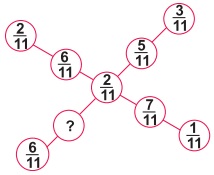Post Your Answer
Post Your Answer
Post Your Answer
Post Your Answer
Ans 4:
Class : Class 6
higher order thinking skills (hots) is nice but need much better solutions for several questions for example if the question is a 1L 50 ml = 1050 mlb 102 L 52 ml =102052 ml c 5L 0 ml =500 mld 678 L 8ml =678080 mland they say incorrect is d it is needed to be explained
Ans 6:
Class : Class 6
The answer is B because all numbers add up to 10 so you should find what number add up to 10/11
Ans 10:
Class : Class 9
B is correct as all the fractions on the side with 2/11are adding up to 10/11 so 6/11 2/11 2/11 is equal to 10/11.....ð
Ans 12:
Class : Class 4
fffffffffffffffffffffffffffffffffffffffffffffffffffyyyyyyyyyyyyyyyyyyyyyyyyyyyyyyyyyyyyyyyyyyyyyyyyyyyyyyyyyyyyyyyyyyyyyyyyyyyyyyyyyyyyyyyyyyyyyyyyyyyyyyyyyyyyyyyyyyyyyyyyyyyyyyyyyyyyyyyyyyyyyyyyyyyyyyyyyyyyyyyyyyyyyyyyyyyyyyyyyyyyyyyyyyyyyyyyyyyyyyyyyyyyyyyyyyyyyyyyyyyyyyyyyyyyhy
Post Your Answer
Ans 1:
Class : Class 7
Option d is right answer as, angle KLO is equal to angle MLN because these are vertical opposite angles. So, we have to angles of a triangle. Take angle LMN equal to x. Then form the equation - x+70+50=180 = x+120=180
x=180-120=x=60








 - 25 minutes past 7 pm
- 25 minutes past 7 pm
 - 35 minutes to 6 pm
- 35 minutes to 6 pm
 - 35 minutes past 8:00 am
- 35 minutes past 8:00 am
 - 35 minutes to 8:00 pm
- 35 minutes to 8:00 pm